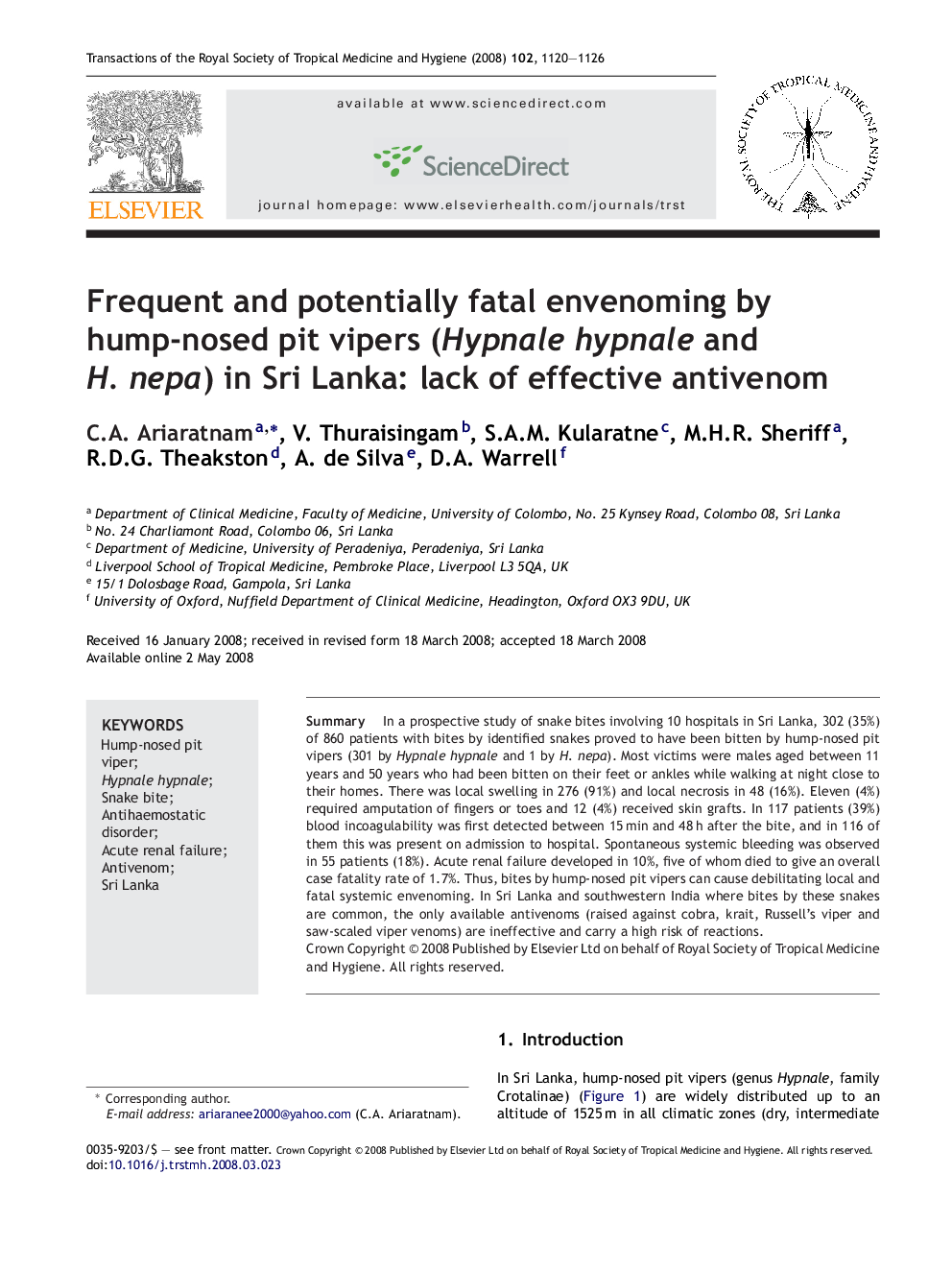| Article ID | Journal | Published Year | Pages | File Type |
|---|---|---|---|---|
| 3420638 | Transactions of the Royal Society of Tropical Medicine and Hygiene | 2008 | 7 Pages |
SummaryIn a prospective study of snake bites involving 10 hospitals in Sri Lanka, 302 (35%) of 860 patients with bites by identified snakes proved to have been bitten by hump-nosed pit vipers (301 by Hypnale hypnale and 1 by H. nepa). Most victims were males aged between 11 years and 50 years who had been bitten on their feet or ankles while walking at night close to their homes. There was local swelling in 276 (91%) and local necrosis in 48 (16%). Eleven (4%) required amputation of fingers or toes and 12 (4%) received skin grafts. In 117 patients (39%) blood incoagulability was first detected between 15 min and 48 h after the bite, and in 116 of them this was present on admission to hospital. Spontaneous systemic bleeding was observed in 55 patients (18%). Acute renal failure developed in 10%, five of whom died to give an overall case fatality rate of 1.7%. Thus, bites by hump-nosed pit vipers can cause debilitating local and fatal systemic envenoming. In Sri Lanka and southwestern India where bites by these snakes are common, the only available antivenoms (raised against cobra, krait, Russell's viper and saw-scaled viper venoms) are ineffective and carry a high risk of reactions.
